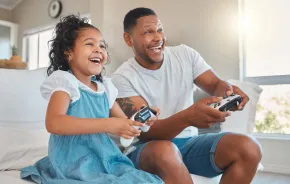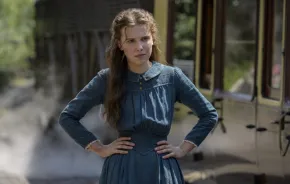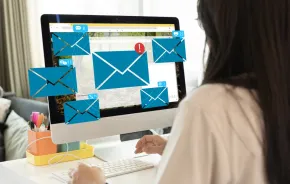
I have a great interview today with Jeff Mack, the author/illustrator of Good News Bad News. He has some awesome advice for parents about how to use his book to help kids learn how to find the positive in a negative situation and how to see that the pros and cons are all interconnected. Plus, a fun story about a creative way in which a mother and daughter bonded through the love of a book.
It’s not just about the reading! Find ways you can connect with your kids through these great books, and let me know if anything has worked well for you lately!
From Indiebound.org: “Good news, Rabbit and Mouse are going on a picnic. Bad news, it is starting to rain. Good news, Rabbit has an umbrella. Bad news, the stormy winds blow the umbrella (and Mouse!) into a tree.“
Title: Good News Bad News
Author: Jeff Mack
Genre: Picture Book
Ages: Infant, Toddler, Preschooler
Q and A with the author:
Were you more of a good news kid or a bad news kid or both?
I was a lot of both. I was an intense kid who would work for hours on a project without a break. My mom used to bring home cardboard boxes from the grocery store, and I would try to turn them into pinball machines with working flippers and rubber band bumpers. I wouldn’t quit until I got them to work. When I did, everything seemed like good news to me. But if I got stuck and couldn’t figure out a certain mechanism, it felt like really bad news. My frustration spurred me to turn that bad news into good news. I suppose I’m still a little like this when I’m writing and illustrating books today.
Any advice for parents of a bad news kid?
I think kids often copy what they see and hear from their parents. If you want them to recognize the positive side of things, consciously model positive attitudes and notice if they start adapting that point of view. Also, take the time to learn more about their pessimistic perspectives rather than discouraging them from showing negative emotions. There are many valid ways to view the world, and some negative feelings have the power to inspire positive changes. That’s what happens at the end of Good News Bad News when Rabbit and Mouse swap attitudes and become better friends as a result of their newly found empathy.
In your school trips or other interactions with kids, have you met children who relate to some of your main characters or have otherwise gained insight from your books (even if they don’t see it quite like that)?
At school visits, I often find I gain as many insights about being a kid as the kids gain about being an author. However, I just received an email from a mom who enjoyed reading my Hippo and Rabbit books with her daughter. They both connected with the comical way the characters deal with slightly scary situations like spiders and swings. (Rabbit tends to be overly bold for his modest size while Hippo is a bit timid for his extra-largeness. She told me they invented voices for the characters and got into the habit of seeing things from their quirky perspectives. Since then, they’ve been talking like Hippo and Rabbit in all kinds of random places like the grocery store or the swimming pool.
As the author, it feels great to hear that my ideas have caught on as a game that these two readers can share and use to become closer as a family. I think Good News Bad news has the potential to produce even more positive effects like this!
Any conversation ideas that parents can have with their kids after reading the books to help them see how to make good news out of bad news without lecturing them?
Kids learn better when they’re having fun. So turn the conversation into a game. When something positive happens, trace its cause back to something that seemed like bad news at the time. For example “Good news! You discovered a new favorite ice cream flavor! But that’s only because of some earlier bad news: they were sold out of your formerly favorite flavor.” Then trace that bad news to the good news that preceded it: “We’re going to get ice cream!”
Seeing good news and bad news as part of an on-going chain of events is surprisingly catchy. Plus, it may offer a little distance from the emotional impact of the bad news. Later, when something disappointing happens, kids may have an easier time seeing that the bad news may literally be setting the stage for something positive in the future.
 About the Author:
About the Author:
Wendy Lawrence is a Seattle native who is now living with her husband and two young sons in Ann Arbor, Mich. A longtime educator and former middle school head at Eastside Prep in Kirkland, she now blogs about parenting and books at The Family That Reads Together.











